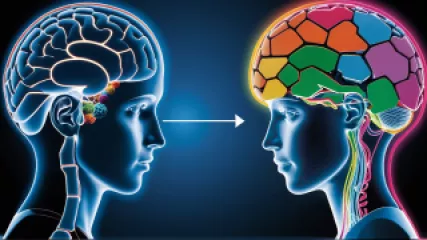Why Theories of Intelligence Matter More Than Ever
Why Theories of Intelligence Matter More Than Ever
In a world that is rapidly evolving, the theories and concepts surrounding intelligence have never been more crucial. As we grapple with the challenges of the 21st century, from the rise of artificial intelligence to the increasing complexity of global issues, the way we understand and approach intelligence is fundamental to our ability to navigate these uncharted waters.
At the heart of this discussion are the various theories of intelligence, each offering a unique perspective on the nature and manifestation of this elusive quality. From the traditional IQ-based models to the more modern theories that encompass emotional, social, and creative intelligence, the landscape of intelligence research is vast and ever-changing.
Rethinking the Concept of Intelligence
For decades, the predominant view of intelligence was that it could be neatly packaged and measured through standardized tests, resulting in a single, numeric score that purported to capture an individual's cognitive abilities. However, this reductionist approach has come under increasing scrutiny, with a growing recognition that intelligence is a far more multifaceted and complex phenomenon.
One of the seminal figures in this shift is Howard Gardner, the renowned psychologist who introduced the theory of multiple intelligences. Gardner's groundbreaking work challenged the traditional notion of a single, unified intelligence, arguing that humans possess a diverse array of cognitive capacities, each with its own unique strengths and weaknesses.
"Intelligence is not a single, unitary ability, but rather a set of distinct abilities, talents or mental skills." Howard Gardner
Gardner's theory encompasses eight distinct forms of intelligence, including linguistic, logical-mathematical, spatial, bodily-kinesthetic, musical, interpersonal, intrapersonal, and naturalistic. This shift in perspective has had profound implications for how we understand and evaluate intelligence, moving us away from the narrow confines of IQ tests and towards a more holistic and inclusive approach.
The Evolving Landscape of Intelligence Theories
Gardner's work has been widely influential, but it is just one of many theories that have emerged in recent decades to challenge the traditional view of intelligence. Another prominent theory is Robert Sternberg's triarchic theory of intelligence, which posits that intelligence is comprised of three distinct components: analytical, creative, and practical.
Sternberg's theory emphasizes the importance of practical problem-solving skills and the ability to adapt to changing environments, in addition to the more traditionally recognized analytical and creative abilities. This broader conception of intelligence has been particularly relevant in the context of the modern workplace, where the ability to navigate complex social situations and apply knowledge in real-world settings is increasingly valued.
Another influential theory is Daniel Goleman's work on emotional intelligence, which explores the role of emotional awareness, empathy, and social skills in shaping individual and collective success. Goleman's research has highlighted the importance of emotional intelligence in areas such as leadership, decision-making, and interpersonal relationships, challenging the notion that intelligence is solely a cognitive phenomenon.
"Emotional intelligence is the ability to sense, understand, and effectively apply the power and acumen of emotions as a source of human energy, information, connection, and influence." Daniel Goleman
These alternative theories of intelligence have gained traction in recent years, as researchers and practitioners alike have recognized the limitations of traditional, IQ-based models. By expanding our understanding of intelligence beyond the purely cognitive realm, these theories have opened up new avenues for research, education, and personal development.
The Practical Implications of Intelligence Theories
The significance of these evolving theories of intelligence lies not only in their theoretical insights but also in their practical applications. As we navigate the complex challenges of the 21st century, a deeper understanding of intelligence and its various manifestations can have profound implications for how we approach education, workforce development, and societal issues.
Rethinking Education
One of the most significant impacts of these intelligence theories has been on the field of education. The traditional focus on standardized testing and narrow academic metrics has come under scrutiny, with a growing recognition that such approaches often fail to capture the full range of a student's abilities and potential.
By embracing the principles of multiple intelligences, emotional intelligence, and other holistic models, educators are now exploring new ways to nurture and develop the diverse talents of their students. This might involve incorporating more project-based learning, emphasizing the development of social and emotional skills, and providing opportunities for students to explore and cultivate their unique strengths and interests.
Moreover, the recognition of the importance of practical intelligence and the ability to adapt to changing circumstances has led to a renewed focus on the development of essential life skills, such as problem-solving, critical thinking, and adaptability. This shift in educational priorities can have far-reaching implications, equipping students with the tools they need to navigate the complex challenges of the modern world.
Workforce Development and Leadership
The evolving theories of intelligence have also had a significant impact on the world of work and leadership. As organizations grapple with the challenges of the 21st-century economy, the need for a more diverse and multifaceted understanding of intelligence has become increasingly apparent.
Employers are now recognizing the value of emotional intelligence, social skills, and practical problem-solving abilities, in addition to traditional cognitive abilities. This has led to a shift in hiring practices, talent development strategies, and leadership development programs, with a greater emphasis on identifying and nurturing these broader forms of intelligence.
For example, companies are increasingly incorporating emotional intelligence assessments and team-building exercises into their recruitment and training processes, recognizing the importance of these skills in fostering effective collaboration, communication, and decision-making. Similarly, leadership development programs are placing greater emphasis on the cultivation of self-awareness, empathy, and the ability to navigate complex social dynamics – the hallmarks of emotional intelligence.
Societal Implications
Beyond the realms of education and the workforce, the evolving theories of intelligence also have significant implications for our broader societal challenges. As we grapple with issues such as climate change, social inequity, and global health crises, the importance of a multifaceted understanding of intelligence becomes increasingly clear.
For instance, the recognition of the value of practical intelligence and the ability to adapt to changing circumstances can inform our approaches to environmental sustainability and disaster response. By cultivating a diverse range of cognitive, emotional, and social skills, individuals and communities can be better equipped to navigate the complexities of these global challenges and develop innovative solutions.
Similarly, the principles of emotional intelligence and interpersonal skills can play a crucial role in addressing societal issues such as prejudice, conflict resolution, and community building. By fostering greater empathy, self-awareness, and collaborative problem-solving, we can work towards more inclusive and equitable societies.
Embracing the Complexity of Intelligence
As we move forward in the 21st century, it is clear that our understanding of intelligence must continue to evolve and adapt. The traditional, narrow conceptions of intelligence that have dominated for so long are no longer sufficient to meet the demands of our rapidly changing world.
By embracing the complexity of intelligence, as outlined by the various theories and models that have emerged in recent decades, we can unlock new possibilities for individual and collective growth, innovation, and problem-solving. Whether in the realm of education, the workforce, or our broader societal challenges, a more nuanced and inclusive understanding of intelligence can be a powerful catalyst for positive change.
As we navigate the uncertain future, it is imperative that we continue to explore and expand our theories of intelligence, always striving to better understand the multifaceted nature of this fundamental human quality. Only by doing so can we truly harness the full potential of our minds and our collective capabilities to address the pressing issues of our time.
Key Takeaways:
- Theories of intelligence have evolved beyond the traditional, narrow conceptions of IQ, expanding to encompass diverse cognitive, emotional, and social abilities.
- Influential theories like Gardner's multiple intelligences, Sternberg's triarchic theory, and Goleman's emotional intelligence have challenged the dominant view of intelligence and opened new avenues for research and application.
- The practical implications of these evolving theories are far-reaching, impacting education, workforce development, leadership, and our approach to societal challenges.
- As we face the complex issues of the 21st century, a deeper understanding of the multifaceted nature of intelligence is crucial for unlocking individual and collective potential.
- Embracing the complexity of intelligence is a necessary step in navigating the uncertain future and driving positive change in our rapidly evolving world.
Conclusion
The theories and concepts surrounding intelligence have never been more crucial in our rapidly evolving world. As we grapple with the challenges of the 21st century, from the rise of artificial intelligence to the increasing complexity of global issues, the way we understand and approach intelligence is fundamental to our ability to navigate these uncharted waters.
The traditional, narrow conceptions of intelligence that have long dominated our thinking are no longer sufficient to meet the demands of our time. Instead, we must embrace the complexity of intelligence, as outlined by the various theories and models that have emerged in recent decades.
By recognizing the diverse array of cognitive, emotional, and social abilities that make up our intelligence, we can unlock new possibilities for individual and collective growth, innovation, and problem-solving. Whether in the realm of education, the workforce, or our broader societal challenges, a more nuanced and inclusive understanding of intelligence can be a powerful catalyst for positive change.
As we navigate the uncertain future, it is imperative that we continue to explore and expand our theories of intelligence, always striving to better understand the multifaceted nature of this fundamental human quality. Only by doing so can we truly harness the full potential of our minds and our collective capabilities to address the pressing issues of our time.
The theories of intelligence that we embrace today will shape the world of tomorrow. By embracing the complexity of intelligence, we can unlock new paths to a brighter, more equitable, and more sustainable future for all.






